Everything on planet earth come with a different level of classification. Hence the United State Of America has the highest inmate population in the world with more than 2,220,300 adults which were incarcerated in US federal and state prisons, and county jails in 2008. This inmate population is allocated as is; more than 1,518,559 convicts in federal and state prisons, 785,556 inmates in local jails, 86,927 delinquents in juvenile facilities, 13,576 criminals in territorial prisons, 9,957 offenders in ICE facilities, 2,135 wrongdoers in jails in tribal territories and 1,651 felons in military facilities. These stats are according to the US Bureau of Justice Statistics (BJS), in 2013.
With the majority of these criminals being African American and Hispanic, many of these correctional facilities are currently overcrowded beyond capacity with gang members, sworn enemies, murderers, child molesters, pedophiles, mob bosses, shot callers, hardcore convicts, first timers and even white collar criminals. Hence it’s not a surprise that things can go sour when you have all these types of individuals packed in one place 24 hours a day, 7 days a week and 365 days a year. So without further ado here are the top 10 worst, toughest, deadliest and most dangerous federal state prisons and county jails in the United States Of America (USA):
#1 Attica Correctional Facility
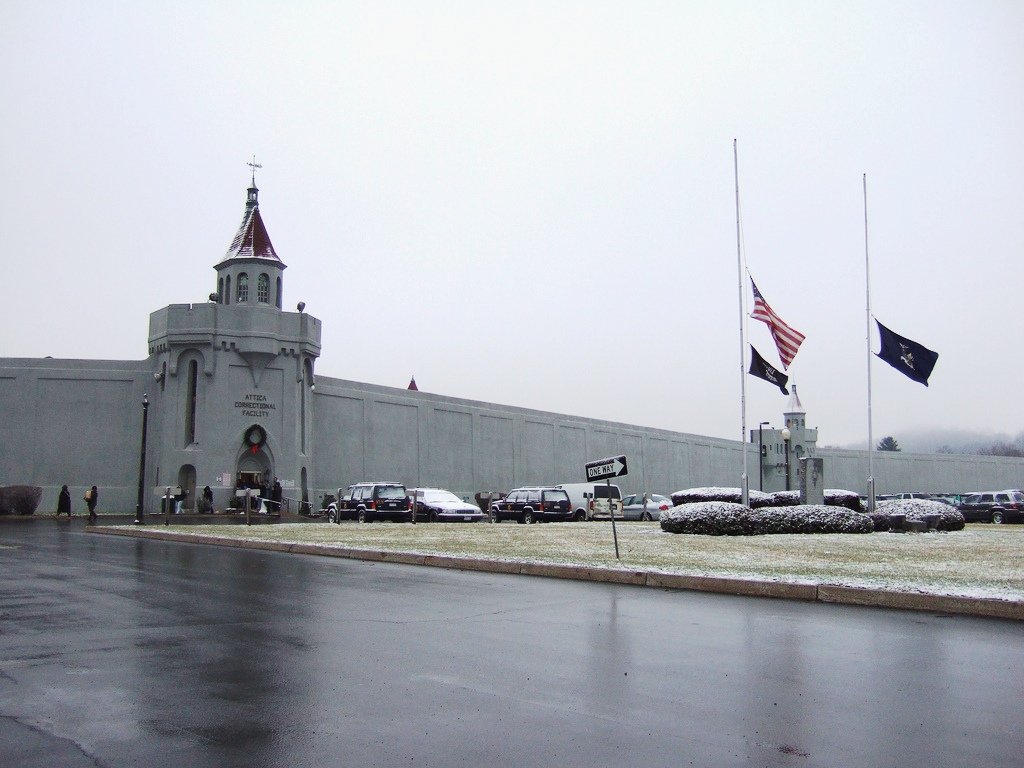
Except for actual war zones, prison facilities are probably among the most dangerous places on earth. Though active combat areas would probably yield more casualties in a single day than in a typical prison, this can be evenly matched in a single event: riots. Despite the relative order imposed by prison officials, brewing tensions among prisoners and jail guards make for a perfect recipe for violence. Riots are the culmination of these tensions, and in 1971, Attica Correctional Facility, one of New York State’s largest state penitentiaries, erupted in one of the most violent riots in American history.
Built in 1931, it was the largest (and most expensive) state prison of its time. Unforgiving in appearance, the facility boasts of walls 2 feet thick that towered over 30 feet high, with over a dozen guard towers lining its walls. Of the 1,200-plus prisoners housed in Attica Correctional Facility, more than two-thirds are poor men of Hispanic or African American lineage. Its corrections officers were recruited locally, majority of whom were white men raised in rural areas of New York. Racial discrimination was rampant. It was practically a prisoners’ hell waiting to explode.
Its brutish appearance was evenly matched but its dehumanizing treatment of its prisoners. Food was bad, while appropriate medical care was unheard of. Recreational outlets were virtually nonexistent. Quarters were cramped to capacity. Indeed, it was probably the overcrowding that must have pushed the prisoners over the edge. Crowding meant more competition for resources, something which the facility was notoriously ungenerous of.
While the public generally blamed overcrowding as the reason for the riot, a deeper analysis wound point to discrimination as the main culprit. Political organizations were strictly outlawed. Worse, prison authorities were especially hostile to black Muslims, who were forbidden from exercising their religious practices. The oppressive atmosphere coming from the top, along with the already exaggerated racial overtones within the facility, all helped to bring about an explosive uprising on the 8th of September 1971.
Six days after the riot broke out, 29 inmates were killed, with 10 of the 40-plus hostages being killed during the retaking of the facility. Most severely criticized was the employment of retired jail guards alongside state troopers in retaking the complex.
Under the intense spotlight of media coverage, the uprising in Attica Correctional Facility became an eye opener for most Americans, as it brought to the fore the need to effect sweeping changes in the country’s correctional policies.
#2 ADX Florence Facility
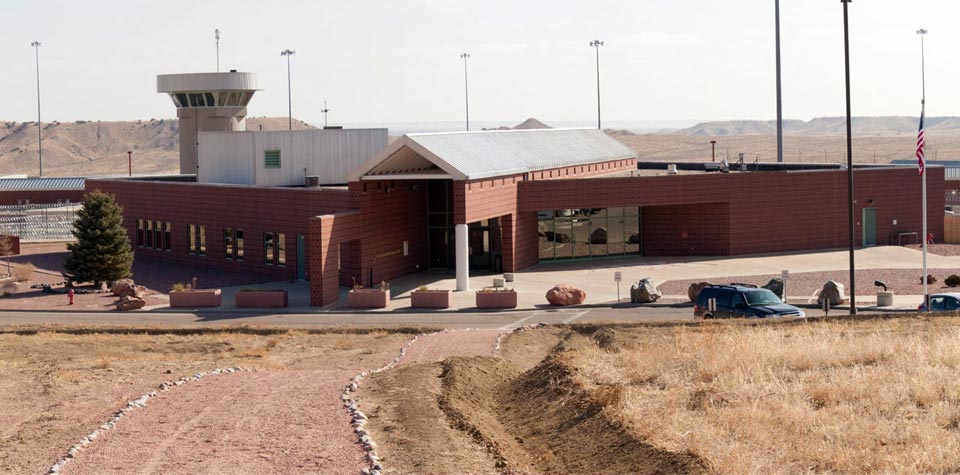
ADX Florence Facility. No, it’s not a pharmaceutical conglomerate or some sprawling medical complex. And no, it has nothing to do with that renaissance city in Italy. Rather, it’s the United States most notorious maximum prison. It’s called Supermax.
Located near Florence, Colorado, the facility sits right in the middle of the state’s searing deserts. Like the prisoners it confines, the facility has acquired a string of aliases, names like Florence ADMAX, ADX Florence, and Alcatraz of the Rockies. ADX Florence, or simply ADX, is the only federal supermax prison in the United States. While its moniker Supermax sounds straight out of a Marvel comic page, its purpose in real life is anything but comical. Within its walls, prisoners are held in absolute solitary confinement for 23 hours a day inside 7-by-12-foot concrete cells. Contact with correction staff runs from minimal to none. Prisoners are allowed only 1 hour outside their cells, after which they go back in.
Of course, the facility is only as famous as its residents. Since the beginning of its operations in 1984, Florence ADX Facility has been home to the world’s most violent and dangerous criminals, from terrorists to secessionists to white supremacists. For one, Ramzi Yousef, one of the chief architects of the bombing of the World Trade Center, calls it his home. He is currently serving a 240-year sentence of solitary confinement.
Departing from the usual ranks of violence advocates is Ronald Griesacker, a former resident of Florence ADX Facility, who, in 2014, was released after serving 3 years. A former member of the pro-secession Republic of Texas, he was convicted in 1998 of mail fraud, bank fraud, and conspiracy charges for passing counterfeit checks amounting to $2 million.
David Lane also has ADX as his permanent residence. A founding member of “The Order,” a white supremacist group, he was convicted on the murder of Jewish radio talk show host Alan Berg in 1984, and was sentenced to 190 years in prison.
Besides the aforementioned three, some 400 other equally notorious criminals are housed in ADX.
The danger they pose to society often seems to justify such harsh fates. However, the existence of supermax prisons like Florence ADX Facility has come under increasing scrutiny in the United States, as human rights advocates question the legality of many of its policies on convicts. But perhaps an even more controversial issue is the question on what to do with the world’s so-called “worst of the worst” criminals – in the absence of supermax prisons.
#3 Cook County Jail
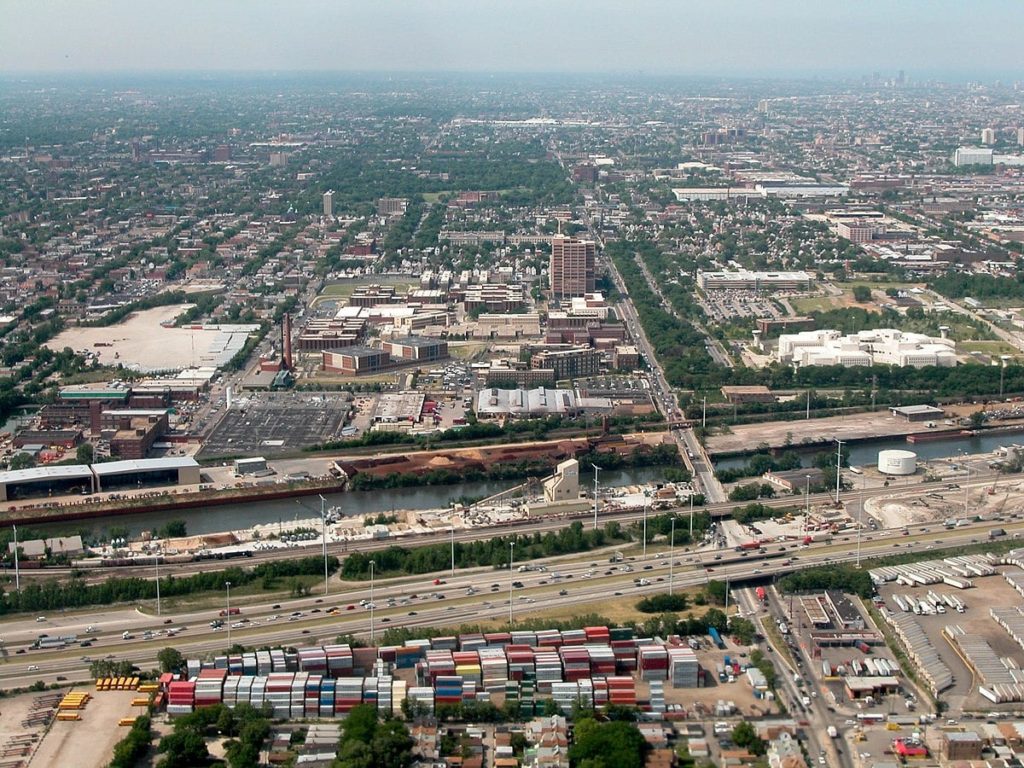
Al Capone, John Wayne Gacy, and the Chicago Seven– these are just some of the most notorious criminals in the history of America who were housed in Cook County Jail. If you are a law student or a tourist interested in studying the shadiest cases in the U.S., you may be thinking about taking a trip to this correctional facility. However, before you set up a visitor’s appointment, it would be best if you conduct a basic background check on the jail’s reception first.
Located in Cook County, Illinois, this correctional institution ranks as the largest jail in America. With a total land area of 96 acres, the jail has a total inmate population of 9,000, with an approximate number of 10,000 staff members. Its inmates are composed of a diverse population from both genders, with 53% belonging to the Black race, 36% to the Hispanic race, 11% from the White race, and the remaining percentage from a mix of Asian and European race.
Although it is known for conducting mandatory testing of Sexually transmitted diseases (STD) on its male inmates, little is known about Cook County Jail’s programs. Despite the diversity in its inmate’s racial population, it is not popular among prisoners and visitors alike for its managerial set-up and staff hospitality.
There have been claims from inmates on physical and verbal abuse administered by the wardens in place of appropriate rules-and-discipline enforcement. Another common complaint heard by visitors from its jail residents is overcrowding and rodent-infestation within the facility. As for the jail’s visitors, reviews on their experiences regarding its management and staff are not positive, either.
According to Cook County Jail visitors, the first inconvenience one would have to deal with upon entering the premises are the limited parking slots. The second inconvenience would be the staff’s treatment towards outsiders upon entering the reception. It has been reported by tourists and visitors that the lack of systems management in the facility was evident.
Visitors would have to line up and wait for a minimum of two hours in order for the staff to locate an inmate’s code and jail location within the facility’s vicinity. Sponsors and family members have also expressed their dismay on the slow pace of the concerned departments in processing permits and other legal documents.
Visiting an inmate seems to take unjustifiably long hours of waiting time. Similarly, discharging prisoners upon issuance of bail settlements and submission of documents for completion or cancellation of charges also take long hours to process.
That being said, despite its high employment rate for both legal and civilian staff, Cook County Jail is one of the most mismanaged correction facilities in Illinois. It is also one of the least inmate and visitor-friendly jails in the United States of America.
#4 Sing Sing Correctional Facility

The name sounds almost too ridiculous to drive fear to anyone with a criminal intent. Those with the penchant for irony might think the name is but a mere guise for an otherwise impregnable prison fortress, where escape is impossible – a sort of final destination for prisoners. Sadly, the irony doesn’t apply.
Despite its child-friendly name, Sing Sing Correctional Facility is actually a maximum security facility in the state of New York. Derived from the word “Sinck Sinck” (a Native American nation), its name was changed to Ossining Correctional Facility in 1978, eventually acquiring its present name in 1985.
Its peculiar name is probably more than offset by its reputation of real-life prison breaks, the likes of which would probably give Hollywood’s movie and TV writers a run for their money.
Once in a while, incarceration breeds ingenuity, and this was best expressed by a number of prisoners who had successfully escaped from Sing Sing Correctional Facility. Chief of them was Willie “The Actor” Sutton, who raided banks because “that’s where the money is.” He broke out of prison five times in his career, with his first escape being in Sing Sing in 1932. He made a makeshift wire ladder to scale an unmanned wall.
More recently, in 1986, Darius Gittens, Thomas Linz, and Julio Giano escaped by distracting jail officers with homemade smokebombs, after which they scaled down a wall using a 30-foot rope made entirely of leather shoelaces. One is left to imagine the number shoes that had to be rendered laceless to build the rope.
While ingenuity and daring among some prisoners would probably account for the escape themselves, their apparent frequency can probably be attributed to the facility’s peculiar location. Sing Sing Correctional Facility is situated near the east bank of the Hudson River, close to railroad tracks that lead to New York City. Their proximity inspires prisoners the hope of an easy escape. Surprisingly, their hopes are not always dashed.
Sing Sing’s reputation for easy escape was probably picked up by Hollywood, as it eventually landed on Hollywood’s movie mills. The first was “The Big House,” which starred Robert Montgomery. This was followed by a string of other movies, the latest being Robert de Niro and Billy Crystal’s 2002 film “Analyze That.”
For sure, past feats would continue to inspire prison break hopefuls of breaking out of Sing Sing. Of course, the task of putting them back in prison is another story entirely.
#5 Folsom State Prison
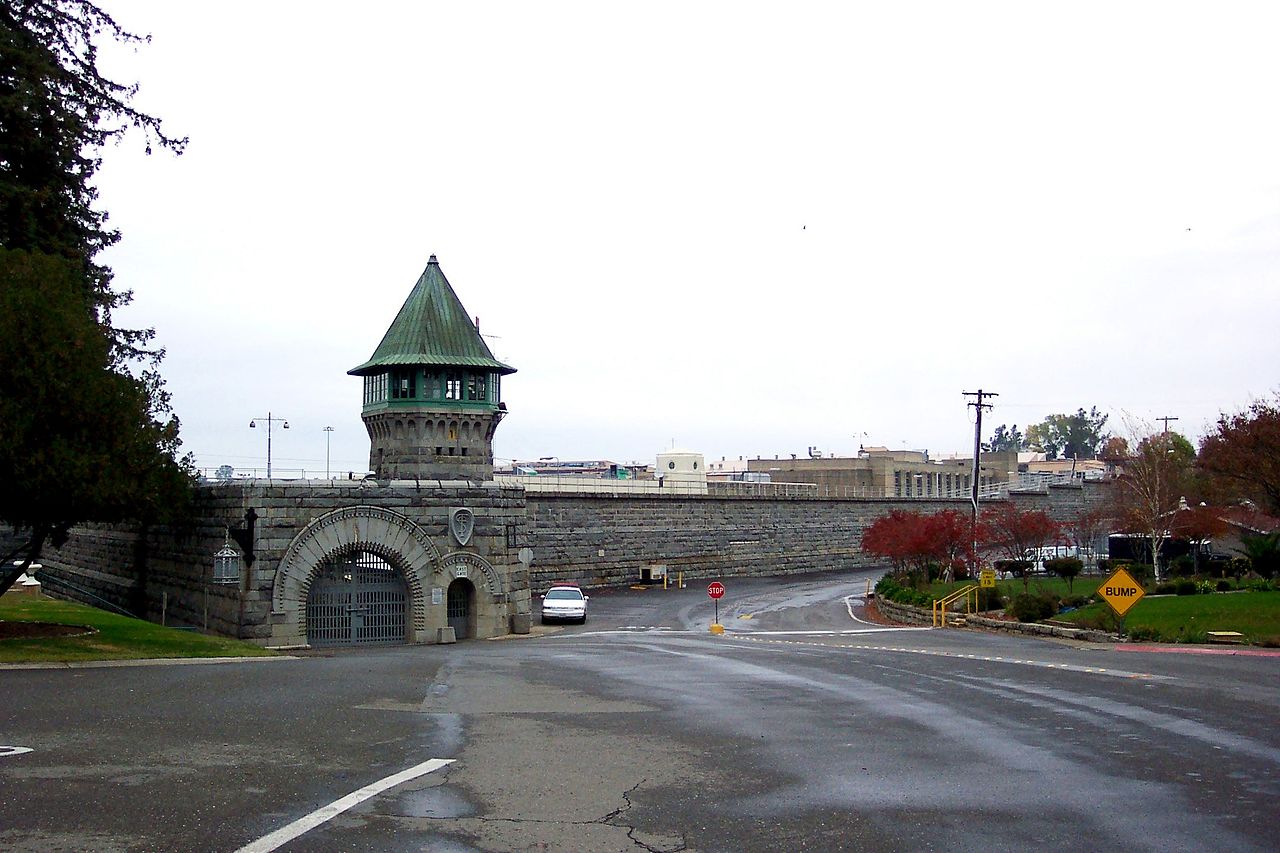
Ten years ago, California imposed the death penalty on one of the oldest persons to be sentenced to execution, Clarence Ray Allen. Allen was 73 years of age and was convicted for murder of his accomplice during a robbery, and three other murders while he was in jail. While the efficiency of the death penalty system in California remains to be under heavy debate, one aspect that Californians are aware of is that crimes in their vicinity are not at all regressing.
Whether or not this failure is because of the poor prison system that California has, is out of the scope of this article. What is in its scope, however, is the discussion of another pressing issue of an ineffective criminal justice system: atrocities committed by security officers inside the Folsom State Prison. Essentially, this is because of a “code of silence” among all officers.
Folsom State Prison is a California State Prison found in the city of Folsom, California. Constructed 136 years ago in 1880, Folsom is the second-oldest penitentiary in the state. Although at present, the FSP serves as a medium security prison, it has always served as a maximum security prison since its construction. The annual growth of residents within its prison cells is roughly at 68%. The alarming growth is one of the reasons California recently begged its legislators to sign a budget to increase the number of cells in the facility.
In 2012, Folsom State Prison (FSP) convicts Cameron Welch and Michael Vera were accused of cutting the throat of another inmate under the instructions of FSP’s gang head Samuel Cox. In the same year, just four months later, security officers of the same penitentiary pepper-sprayed a mentally-ill convict, while other security officers just watched and took videos. What was odd was that in both incidents, no security personnel reported the abuses.
This is the phenomenon referred to as “the code of silence”. The code of silence is the practice of security officers of not reporting abuses, offenses, and violations that they witness. After investigations were done relating to this phenomenon, a report disclosed that two correctional guards stopped speaking to a sergeant who reported delinquency among his other staff members. They only breached their silence to call the sergeant a “rat”.
Additionally, if there is a “code of silence” on violations caused by guards, what interest do the guards have to follow the same code on inmate-to-inmate violation? The answer is simple: manipulation.
Prisoners can control and manipulate security officers. The criminal starts owning an officer once he sees the officer engage in an action that can compromise the officer’s integrity. When this happens, the officer is under the bidding of the criminal. Once the officer fails to make the criminal happy, his profession is at stake. This is because the criminal can easily turn him in for the violations that he knew the officer committed. Under the threat of blackmail, the officer has no to choice but to follow the “code of silence” for his self-preservation.
Of course, this “code of silence” is definitely a grave issue that California must monitor and fix. Ironic as it may seem, the supposed guardians of justice can become the very people who defy it. With the inefficient punitive system that California has, it cannot afford to employ an atrocious staff. Until all these issues are fixed, retribution and restoration in California are at the mercy of a few hands. Until all these issues are fixed, the Folsom State Prison will not be able to serve its purpose.
#6 Louisiana State Penitentiary
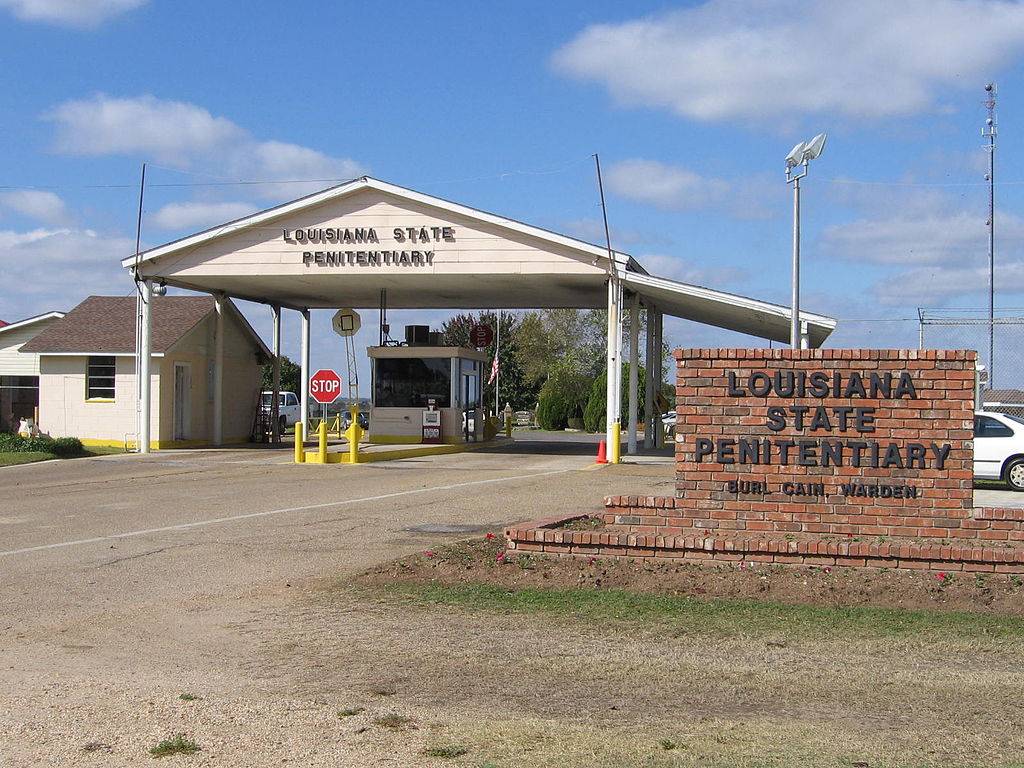
In one of the toughest correctional centers in the United States, an admirable warden made use of religion to convey ethics and morality to the incarcerated.
Nathan Burl Cain, more commonly known as Burl Cain, has been Louisiana State Penitentiary’s warden since January 1995. The Louisiana State Penitentiary (LSP) is based in Angola. It is one of the toughest penal colonies in the United States wherein most convicts will never be released. At present, it is home to 1,800 staff and 6,300 offenders. Such digits make it the most heavily-populated maximum security prison in the United States.
Aside from the given fact that some of those who are admitted to the Louisiana State Penitentiary have committed the gravest crimes in all of America, the penitentiary also holds a bloody history. The penitentiary’s bloodiest chapter dates back to the late 1960s and early 1970s. During this time, prisoners carried rifles pretending to be guards. Homosexual slavery was also very rampant. In addition, murders within the prison walls were also frequent. Statistics show that between the years 1972 and 1975, there was an estimated 350 cases of “serious stabbing” and approximately 40 convicts were killed at the penitentiary. The penitentiary also witnessed 280 physical attacks by prisoners against personnel and 1,107 prisoner-to-prisoner assaults in 1990.
When Burl Cain became warden in 1995, he thought of progressive ideas to pacify a very vicious prison. He was convinced that most institutions’ focus on just the nippy fix – more cells, more guards, and more sentences – only increased the propensity of prisoner aggression. He conceded that there was something critically wrong in the manner the criminal justice system was observed. In the end, he decided to resort to a very bizarre strategy to pacify the inmates. His prison reform? It was to employ Christ as means to mollify Angola.
His prison reform was based under the assumption that religion was the most effective giver of morality. He needed prisoners to realize what morality was to crack down all the violence behind the bars. In fulfilling this, he requested the New Orleans Baptist Theological Seminary to give an ordination curriculum within LSP’s grounds. At present, hundreds of prison-ministers are converting thousands of their imprisoned brothers and sisters to Jesus. Although he invited Baptists to teach the inmates of the ideal way of life, Cain supports other religions. He confessed that he is not concerned about religion per se, but rather on faith that is instrumental to conversion.
In 2015, there were 343 cases of assaults in LSP. Although that number is still alarming, one cannot deny that there has been progress in the reduction of violence in LSP. The figures suggest that the United States of America would not have been labeled as the universal capital of imprisonment if it only knew how to arbitrate on the lives of juveniles before they could engage into unlawful acts, rather than after. In the end, everyone should realize that imprisonment is not because of the law but because of justice. Justice, although a very vague concept, does not only involve correction but more importantly, compassion.
#7 Stateville Correctional Center
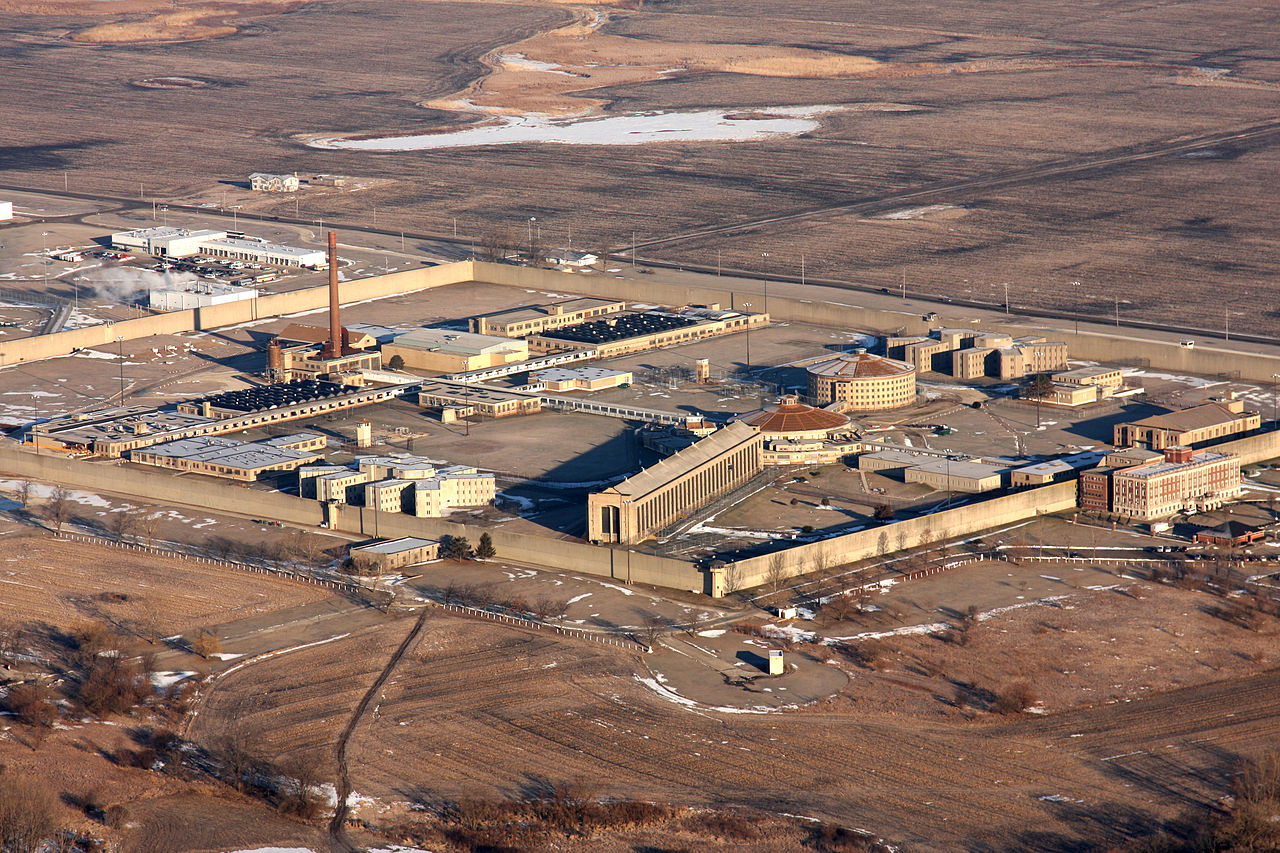
The Stateville Correctional Center is a maximum security adult male correctional establishment which opened its doors back in March 1925. This prison is located 16830 Route 53, Crest Hill, Illinois 60403 and is one of the most unique managed by the Illinois Department of Corrections. It expands on 8.9 km2, of which 260,000 m2 are circled by a 10 m concrete perimeter with 10 wall towers.
This prison was built to accommodate 4,134 prisoners which the average annual cost per inmate is $29,691. Although overcrowding is an issue from time to time it is not as bad as some of the other prisons on this list such as San Quentin State Prison and Folsom State Prison. Nonetheless the inmates confined within The Stateville Correctional Center are some of the most dangerous in Illinois. 60% are serving time because they’ve killed another individual and another 20% are confined for rapes and similar questionable wrongdoings. Even more alarming is the fact 80% are serving a sentence of more than 20 years.
The toughest and most notorious convicts are imprisoned into a zone called the panopticon which is also called by inmates and guards as the “F-House” or the “Round-House”. The panopticon a huge circular complex which look like the coliseum arena from ancient Rome and from a singular centered surveillance room which look like a lighthouse the guards can have a really good 360 degree view of all the convicts. This design was inspired from the brains of British philosopher and prison reformer Jeremy Bentham in 1785.
Now this does not stop assaults from happening. In fact fights upon fights are a daily occurrence within The Stateville Prison. Ambulances specifically designated to the prison are seen coming in and out 24 hours a day. This is largely due to major financial cutbacks which limits the number of guards present at all time and the very rampant gang activities across Illinois, especially Chicago. Some of Stateville’s most notable inmates includes:
William Balfour – Murdered singer Jennifer Hudson’s mother, brother, and nephew. Sentenced to three life sentences plus 120 years.
Nathan Leopold – Transferred from Joliet.
Richard Speck – Convicted April 15, 1967 of murdering eight women.
Paul Modrowski – Convicted February 17, 1995 of first degree accountability to murder for supposedly lending a car to Robert Faraci.
Clint Massey – Convicted June 5, 2016 of first degree murder in 2014 slaying of cab driver Javon Boyd and sentenced to 39 years. At the time, he was 17. Massey rapped under the stage name RondoNumbaNine.
Courtney Ealy – Convicted May 9, 2016 of first degree murder in 2014 slaying of cab driver Javon Boyd and sentenced to 38 years. At the time, he was 19. Ealy rapped under the stage name Cdai.
#8 Rikers Island Jail

With an average of 10,000 inmates and approximately 10,500 staff, a 413.17 acre prison island floats in between Queens and Bronx. Rikers Island, or simply known as “The Island” to most New Yorkers, is one of the largest correction facilities in America.
It can accommodate a population of 15,000 and houses both male and female inmates from different age brackets. It has 10 jails that hold inmates on a temporary stay lasting from a few weeks to two years. Most of its prisoners are offenders whose legal documentations are yet to be finalized in trial and who are pending for transfer to another correction facility.
Rikers Island has four houses for detaining male adults: The Bantum, Kross, Motchan and Vierno. Meanwhile, male inmates who are within the age bracket of 16 to 18 are detained in the Davoren House and the male adolescents in the Taylor House. While all the males are segregated by age group, female inmates, both adolescents and adults, are detained in the Singer House. Inmates who require medical attention are housed in the North Infirmary, while those who may have contagious diseases are detained in the West Facility.
Despite the large number of staff and an array of specific houses and facilities available for inmates requiring medical attention, Rikers Island was reported by Mother Jones magazine in 2013 as one of the Ten Worst Prisons in the United States. Four years prior its published ranking, The Island has been reported by The New York Times to have had at least seven lawsuits which was never heard for trial, accusing officers of violence, corruption and abuse towards its inmates.
There had been repeated cases of rape, abuse of the mentally ill, as well as verbal and physical harassment towards weaker and younger inmates, which had been neglected by the management and the security. Out of every 129 inmates with clinical and mental needs, 77% have been reported to have experienced neglect and maltreatment within their assigned facility.
As for the visitors and their own experiences of visiting the Island, many have complained about the hassle of going back and forth from the harbor and the bus towards the facility. Although precautionary measures are observed from strict dress codes to basic visitation rules, visitors feel their privacy being violated as there had been reports that packages brought to their loved ones are being unreasonably tampered with by the inspection committee.
Item X-rays and substance-testing may be part of the protocol, but by the time the packages reach their rightful recipients, it would usually have a crack or tear. This only heightens claims of disrespect and violation of rights of the inmates and their loved ones by the facility’s management.
#9 San Quentin State Prison
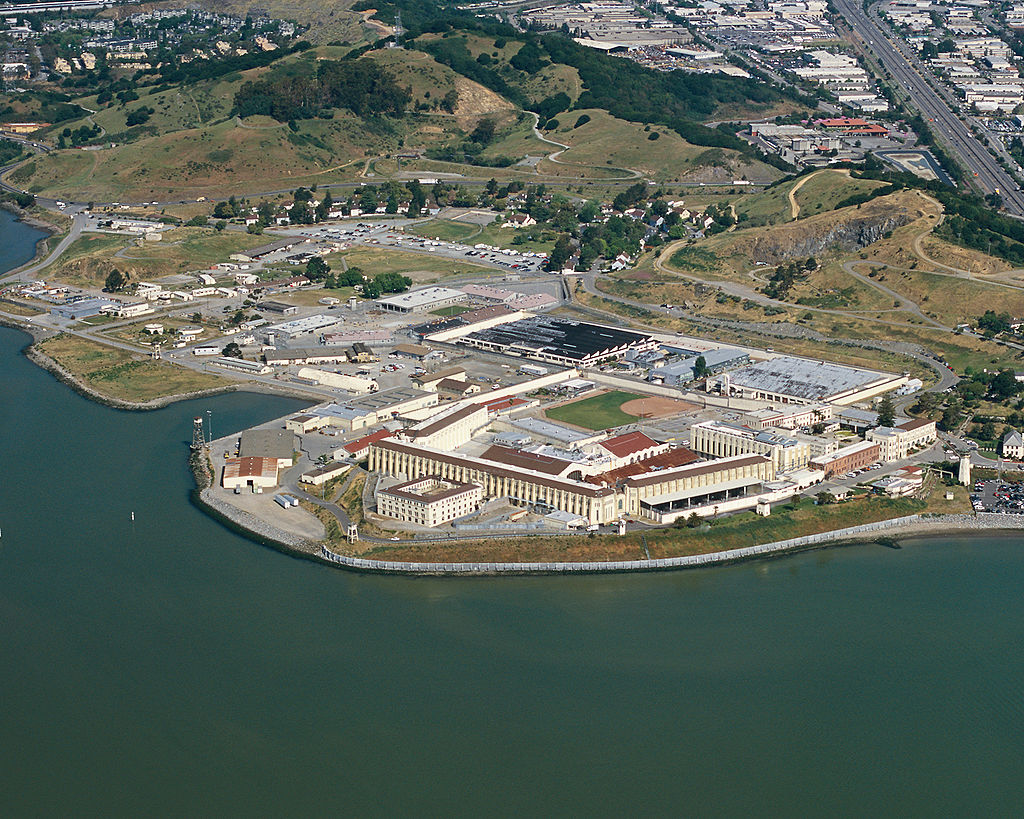
The San Quentin State Prison (SQ) is a correctional facility for men which opened its doors back in July 1852, making it the oldest prison in California. This prison is located north of San Francisco in the unincorporated town of San Quentin in Marin County and is one of the most popular ones managed by the California Department of Corrections and Rehabilitation. This prison’s history which consist of riots, rapes, gang activities, memorable convicts and murders made it a very good subject for many movies, documentaries, books and even video games.
This prison was crafted to accommodate 3082 inmates but it’s a common thing to have more than twice and even three times as many prisoners confined. Overcrowding is such a very serious issue that over 360 inmates are housed in the gymnasium. To make matters worse this increase in the inmate population is not equal to the increase of the amount of prison guards. So frustration, intimidations, assaults, rapes, violence and riots are common things nowadays. The latest most memorable largest riot occurred back in August 9 2005 in which 80 white and Latino inmates fought for six minutes. It took 50 riot officers to stop this massive brawl. The aftermath left 42 inmates injured which three of them seriously enough that they had to be transported to a nearby hospital to get proper treatments.
San Quentin State Prison confines some of the most notorious mentally ill inmates, gang members and shot callers in California. They are serving time for some of the most heinous crimes hence a few of them are serving a life sentence and some even are on death row. It had a gas chamber but that means of execution was abolished back in 1996. The gas chamber was converted to an execution chamber for lethal injection. It’s the only prison in California which death row prisoners are executed by lethal injection. Here are some of its most well-known present and past inmates:
Current
Randy Kraft: serial killer who was convicted of 16 murders and suspected of 51 others. Sentenced to death in 1989.
Charles Ng: serial killer who tortured and murdered 11 people. Sentenced to death in 1999
William Suff: serial killer convicted of murdering 12 prostitutes in Riverside County. Sentenced to death in 1995.
Chester Turner: serial killer convicted of murdering 14 women in Los Angeles between 1987 and 1998.
Former
Stanley Tookie Williams: convicted murderer and early leader of the Crips street gang. Executed by lethal injection on December 13, 2005.
William Bonin: convicted of 14 murders, the “Freeway Killer” (one of three men to have the same nickname) became the first person in California history to be executed by lethal injection on February 23, 1996.
Clarence Ray Allen: convicted for ordering the killing of three people. At age 76, he was the oldest person ever executed in California (by lethal injection on January 17, 2006).
Raymond “Rattlesnake James” Lisenba: convicted of killing his wife, he was the last man to be executed by hanging in California on May 1, 1942.
David Mason: convicted of murdering five people, he was executed in the gas chamber on August 24, 1993.
#10 Pelican Bay State Prison

Located in Crescent City, California, Pelican Bay State Prison is a 111-hectare detention facility with an “X” section specifically designed to hold the state of California’s most notorious prisoners in solitary confinement for the long term. The prison, named after a shallow bay along the Pacific Coast, is situated a few miles away from the city’s main urban section – in a detached and isolated area of the city.
Prison Facilities
The prison opened in 1989, with physically divided operations and grounds. Half of the state prison exudes “general population” environment for Level IV inmates. Exercise courts are built in the area outside the cells. The detention facility’s other half, meanwhile, boasts of the notorious X-shape design. It is made up of white building structures and barren ground. It is simply called the SHU or Security Housing Unit. The perimeter is entirely surrounded by an electric fence.
Protest against Solitary Confinement
The Pelican Bay inmates, with their lawyers and prisoner advocates, protest that SHU confinement is an unusual and cruel punishment because of the adverse conditions. Psychologists and psychiatrists attending to the patients said that prisoners who have spent several months in isolation show symptoms similar to post-traumatic stress disorder (PTSD) including hallucinations, anxiety, anger, depression, and suicide.
Famous Inmates
Many notable offenders in California have, at one time or another, called the state prison facility “home.” These include:
•Hugo Pinell – The longest-staying resident of Pelican Bay’s SHU, Pinell spent 23 years (out of the total 43 years jail time he served) in Crescent City. He was killed in another state prison (Sacramento) at the age of 71.
•Samyka Shakur – The author of Monster: The Autobiography of an LA Gang Member, and a former member of the Crips Gang, Shakur served two sentences at Pelican Bay, and was confined at the SHU. He was released in 2012.
•Joe “Pegleg” Morgan – Morgan was a notorious member of the Mexican Mafia. He was an SHU resident until he was transferred to the Corcoran State Prison’s hospital ward where he died from cancer in 1993.
•Damian Williams – This inmate’s claim to fame was his 1992 beating of Reginald Denny during the time of the infamous riots in Los Angeles. He is currently detained at the state prison in Calipatria after receiving a life sentence for the murder of a drug dealer.
•Charles Manson – In 1997, Manson was charged for “conspiring to distribute narcotics.” He was then transferred to the SHU of the Pelican Bay State Prison. He stayed a total of 14 months in the SHU.
Click Here To Learn How To Survive In These Correctional Facilities

